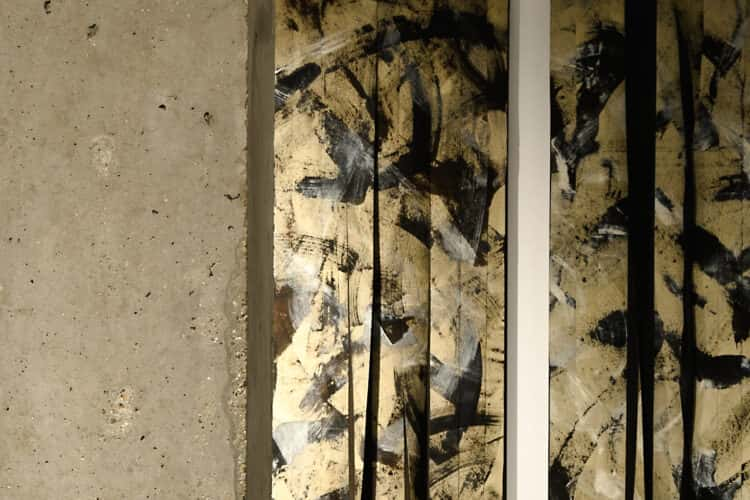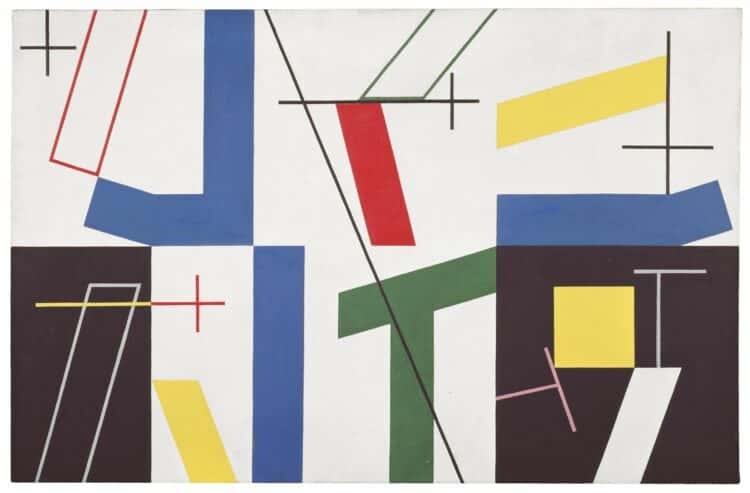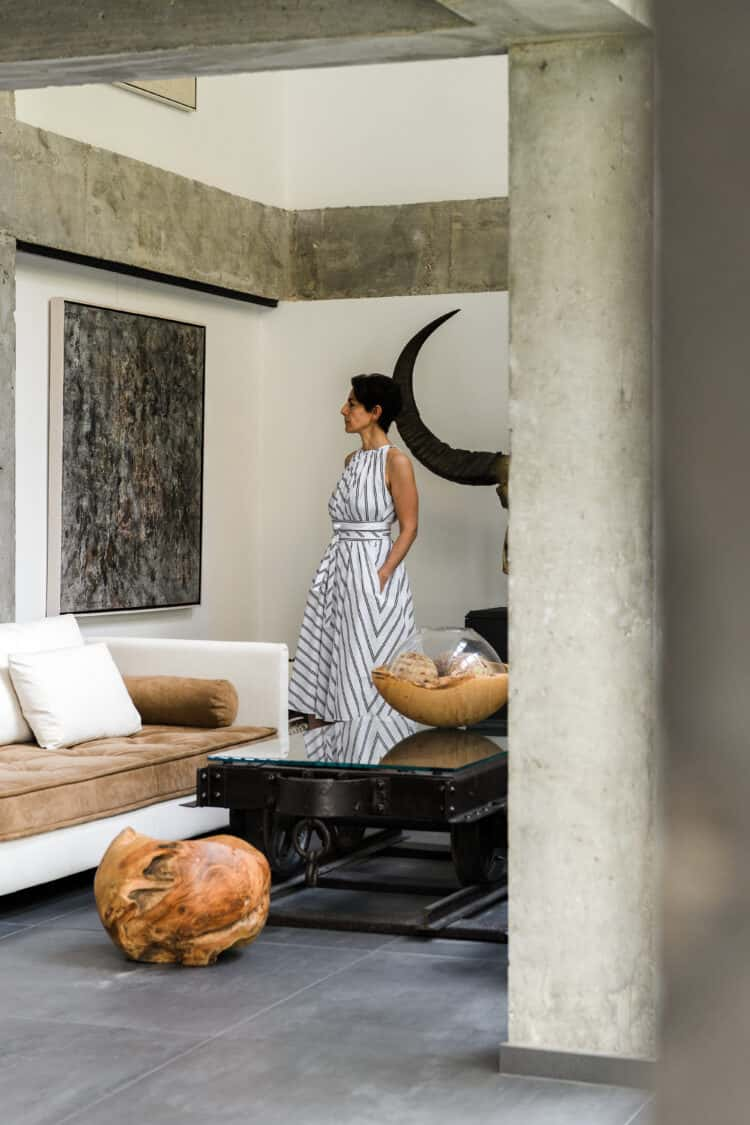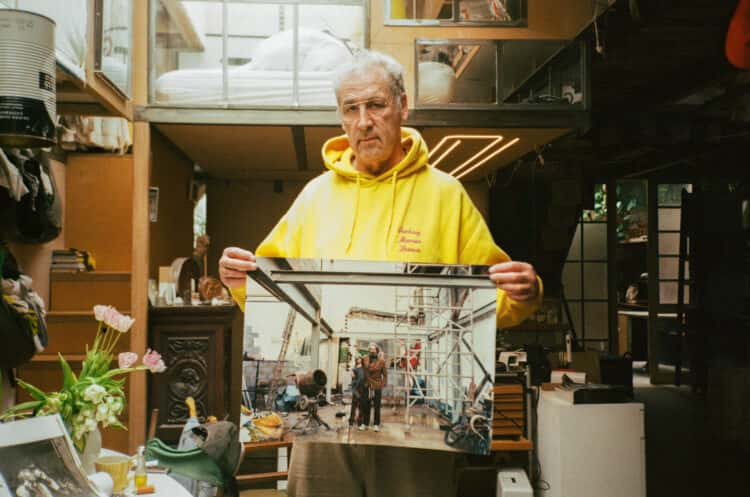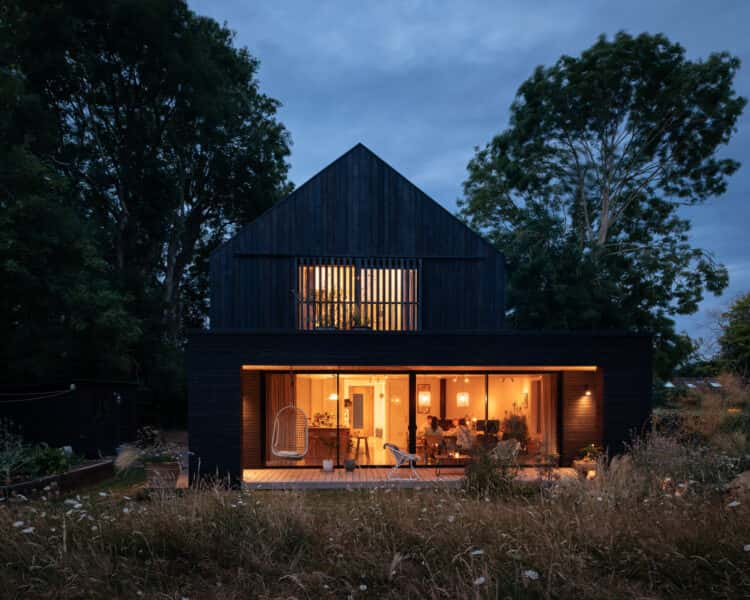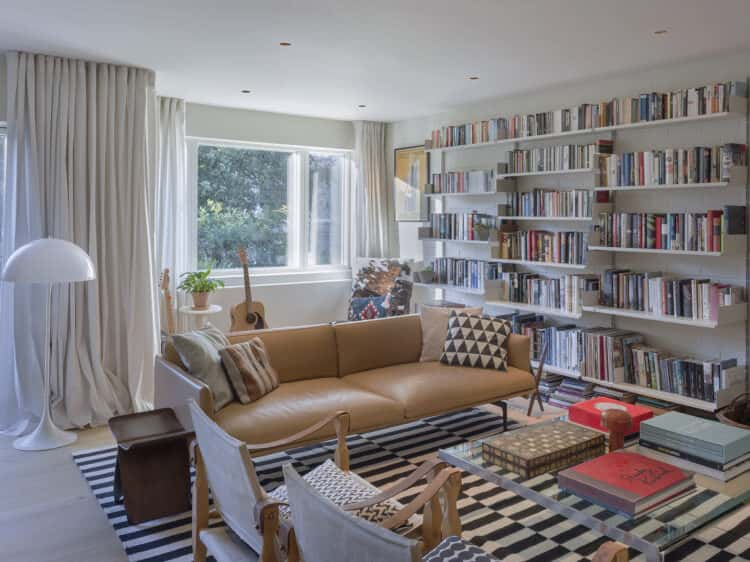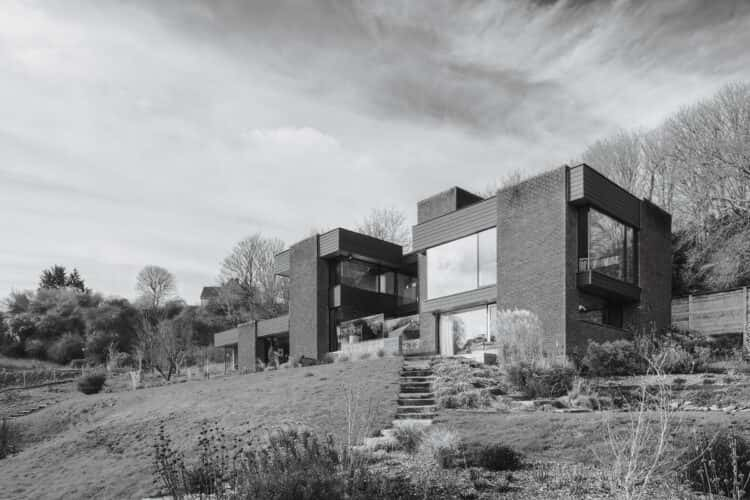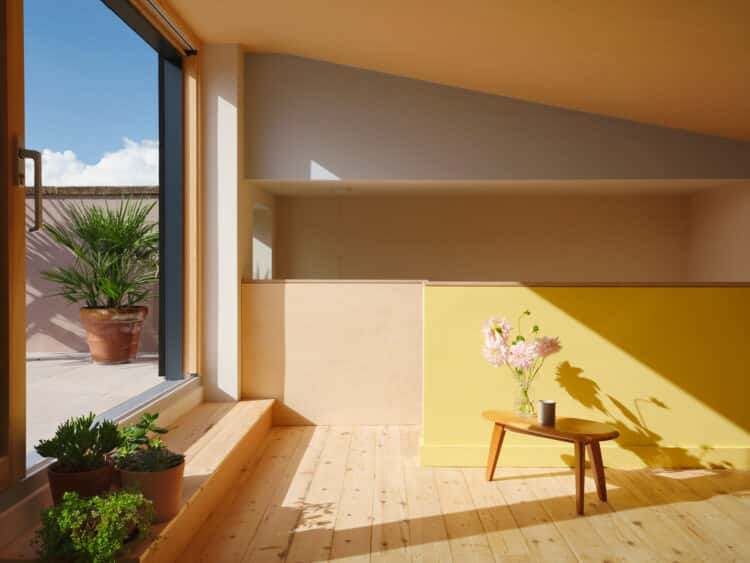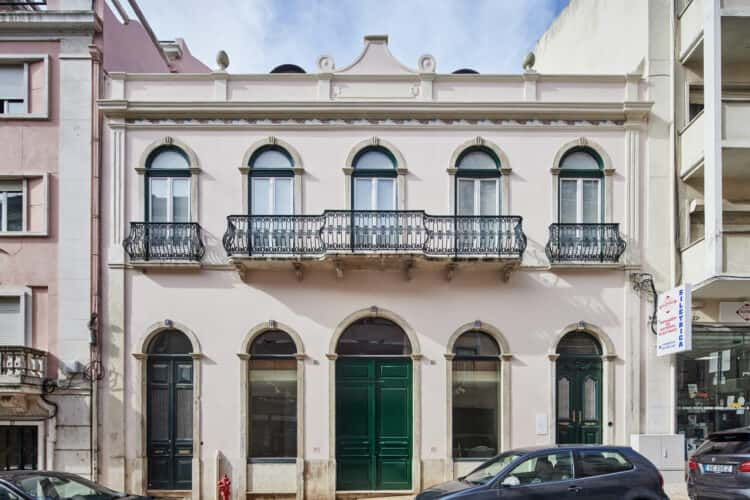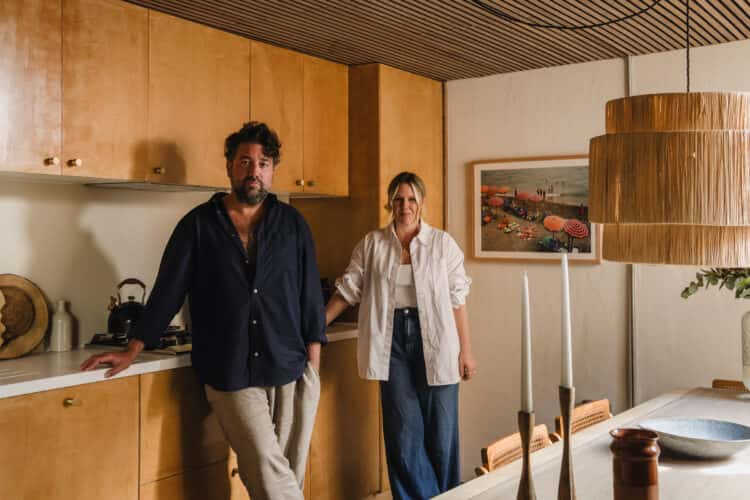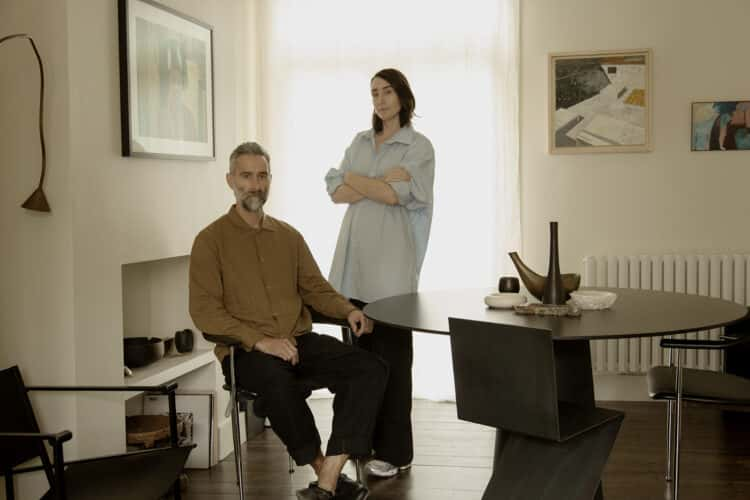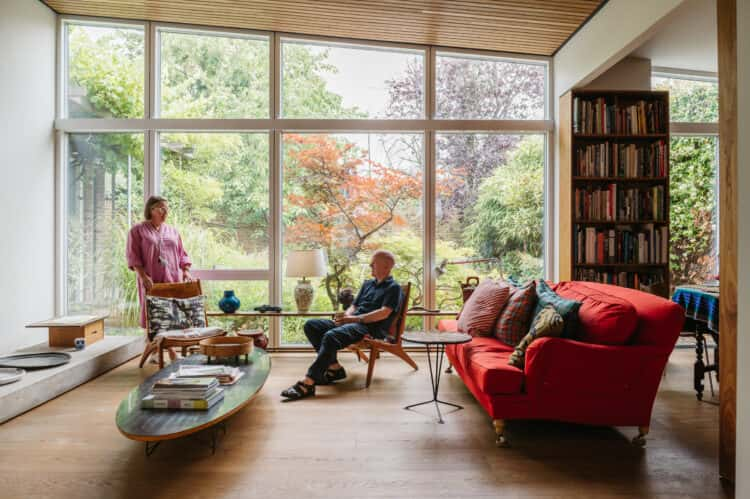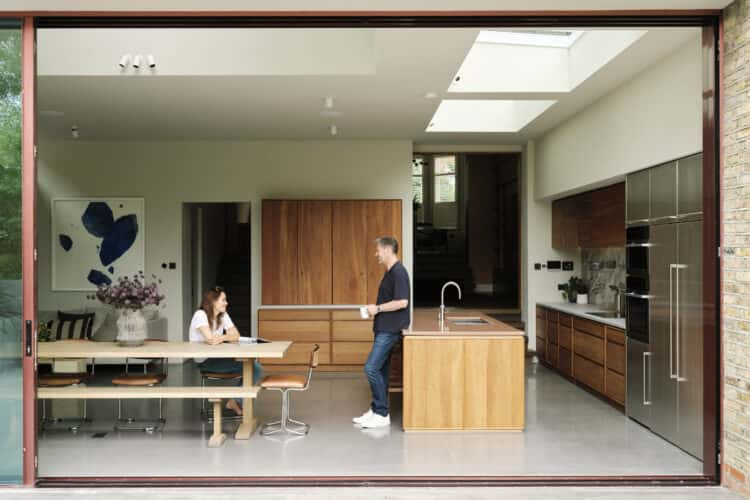Artist Azadeh Ghotbi on living with her work at her self-designed, contemporary apartment in Clerkenwell
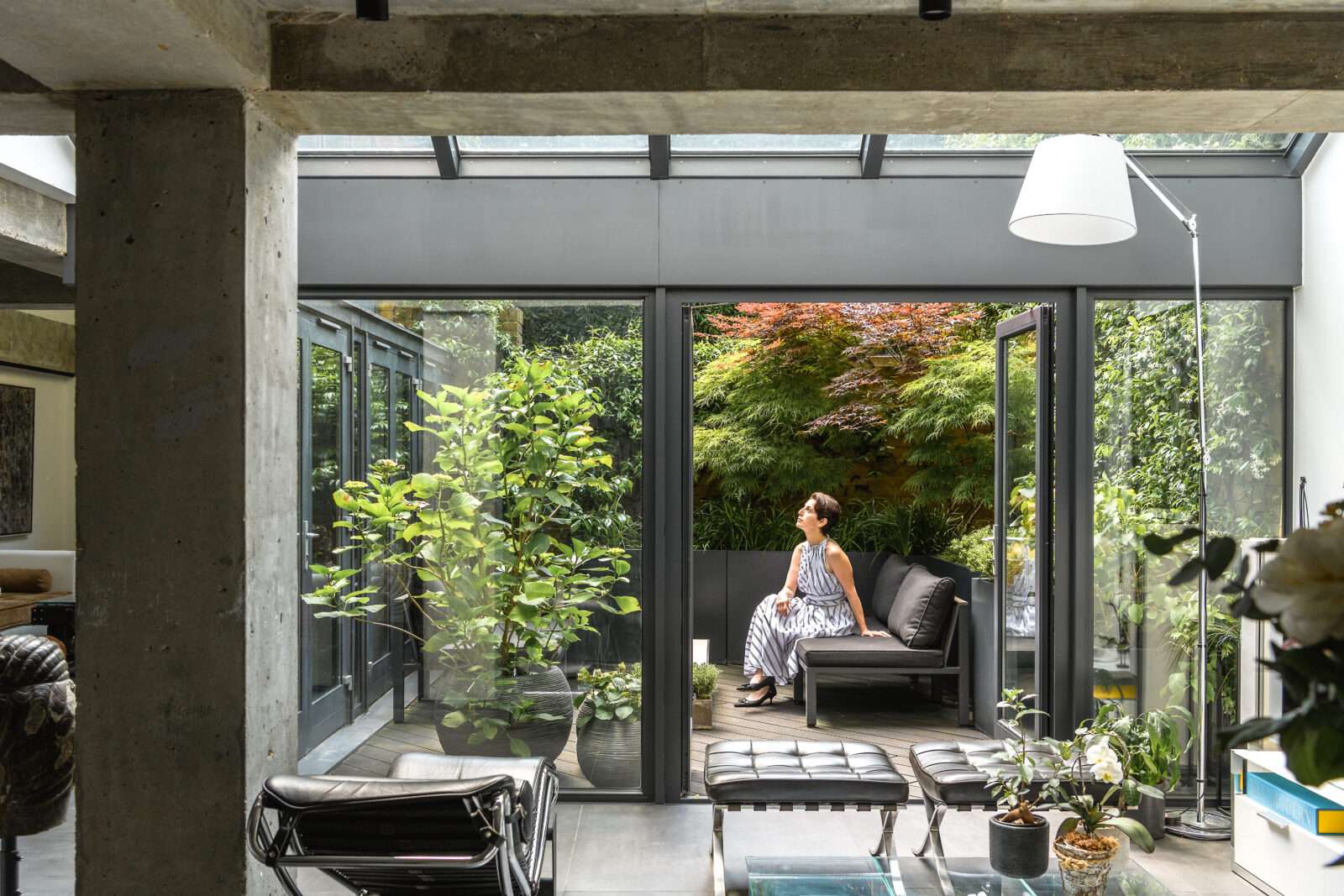
Words Billie Brand
Photography Elliot Sheppard
It was 2017 when Azadeh and her husband bought the apartment. While it appeared worlds apart from the modern live-work space it is today, they saw its potential and instantly fell in love with the courtyard, the heart of their home. After months of meticulous research, they renovated the space, creating a spacious double-height ceiling and revealing the bones of the building – masses of concrete with characterful blemishes. A fitting backdrop, then, to showcase Azadeh’s own paintings, which are inspired by life’s flaws and scars. Here, she discusses sharing her home with her art, her treasured outdoor space, and why she admires the work of Japanese architect Tadao Ando.
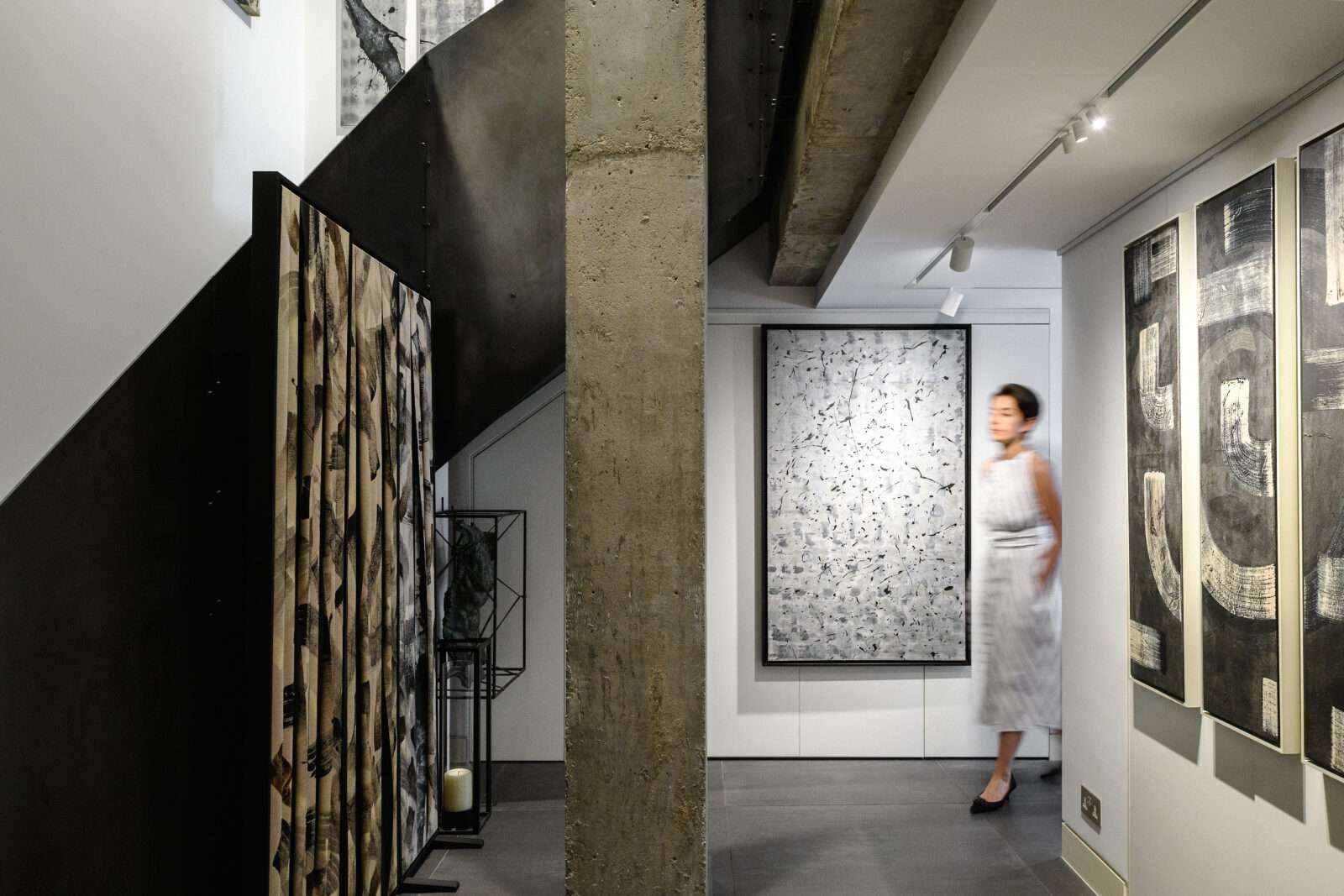
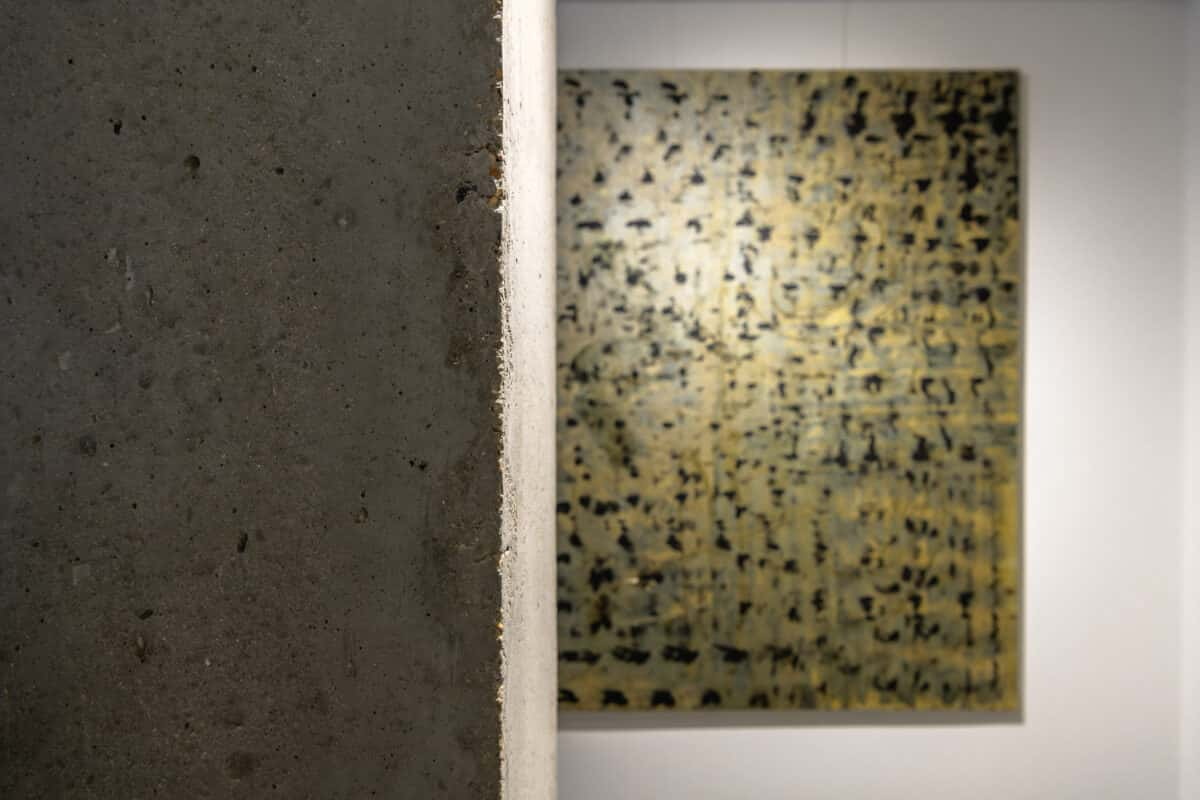
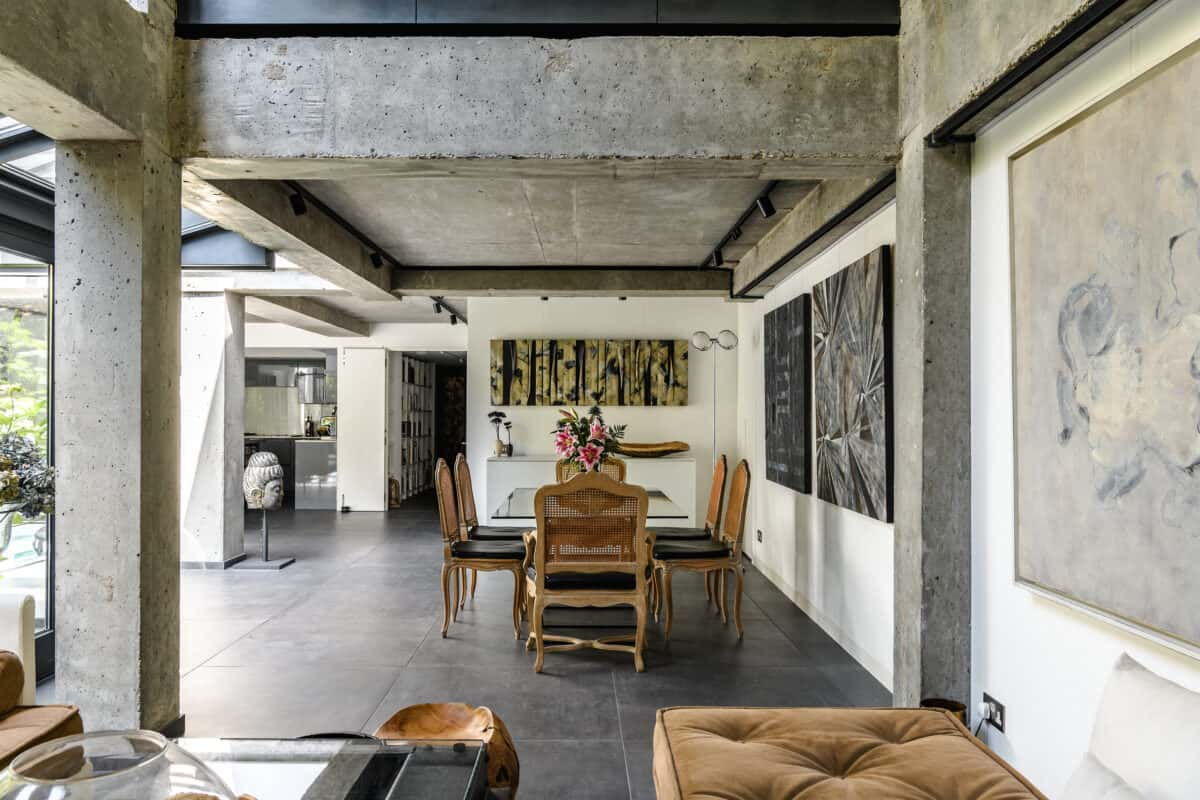
Azadeh: “The art in my home is solely my own. It’s important for me to be surrounded by my work because it helps me understand it better, see how the pieces sit with each other, and how they change throughout the day with different lights. I work flat on the floor, so the initial perspective I have is different from what a collector would see, and I think it’s important to see both.
“I occasionally take clients to the studio itself, which is upstairs – this place is a three-bedroom apartment and the second is my studio; the third is my art storage – but there are over 20 artworks hanging on the walls in the living area. Collectors usually visit huge studios in very remote parts of London – this is unusual because it’s not only a studio and a showroom, but it’s somebody’s home. They get to see the artwork in a lived-in environment and, architecturally and design-wise, they get to see a very unique space.
“We bought our home four years ago. I was looking for a loft warehouse conversion and something that was quite atypical. I didn’t want a beautiful Georgian apartment, which I couldn’t add value to – I didn’t want something already exquisite, which I couldn’t make personal.
“When we first moved in, it was architecturally extremely uninteresting. The building is from the 1990s, when exposed concrete wasn’t on-trend. Although the construction is concrete, everything was covered with plaster. There was this cheap wood on the doors and on the floor, there was shiny 1980s chrome on the balustrade stairwell and the ceiling height was really low.
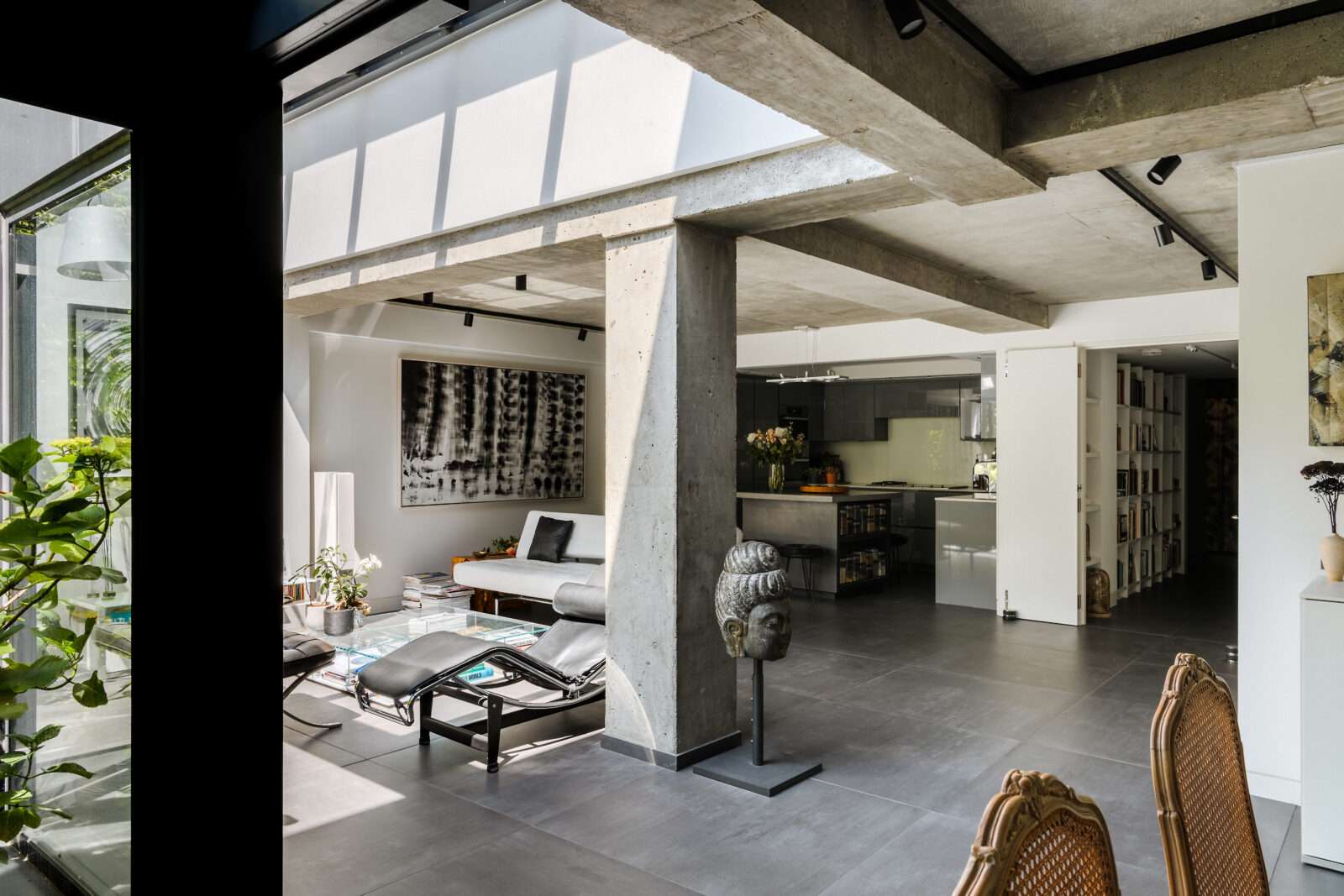
“We ripped the place to shreds, destroying every millimetre of it, and exposed all the concrete. It was a complete gut renovation. You should have seen the pictures – it looked like World War III happened here. But the more concrete that was exposed, the more interesting the bones of the building became.
“We hired an architect just to submit architectural drawings and get permission to make the changes, but I did the rest on my own with the help of an excellent contractor. It really is my vision, my plan. I had a very detailed image in my mind of what the space could become. It took months of preparatory research with moodboards before any of the work had begun.
“I like natural, textured items that are rough, but in a very soft way. I love Tadao Ando – when he pours concrete, he pours concrete with utter perfection in mind because he knows it’s going to be exposed from the beginning. When we exposed the concrete, it had a lot of imperfections. So, we polished it so that it looks like a natural rock stone. It’s very smooth to the touch, but it has all these little grains that make it so interesting.
“My style is not about the shiny and bling. I enjoy mixing natural materials that are in harmony with each other and materials that speak of their age and take pride in their heritage. Over time, my aesthetic has evolved. It’s come from decades of seeing, thinking, appreciating, and training my eye. I don’t have the eyes today that I had in my twenties.
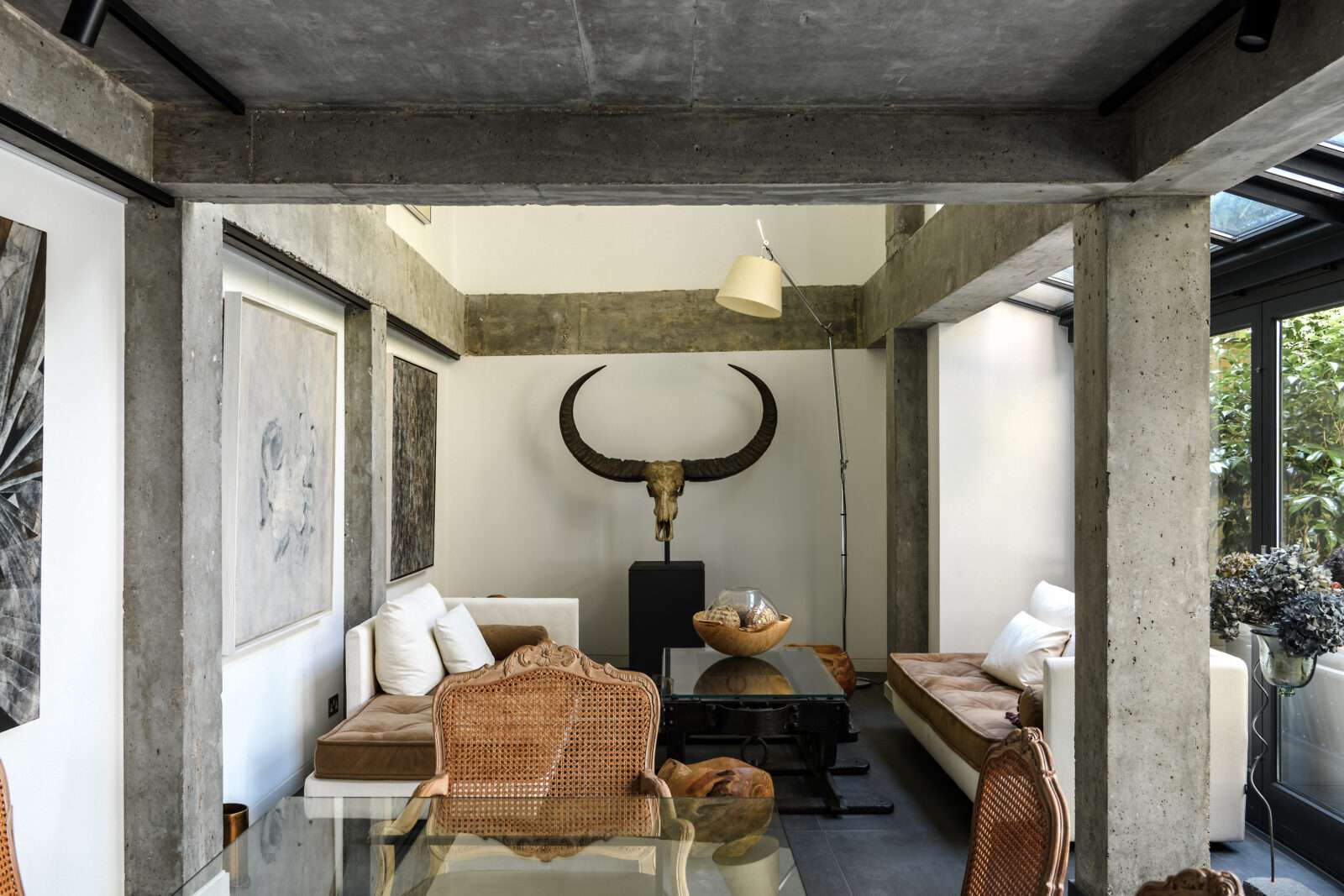
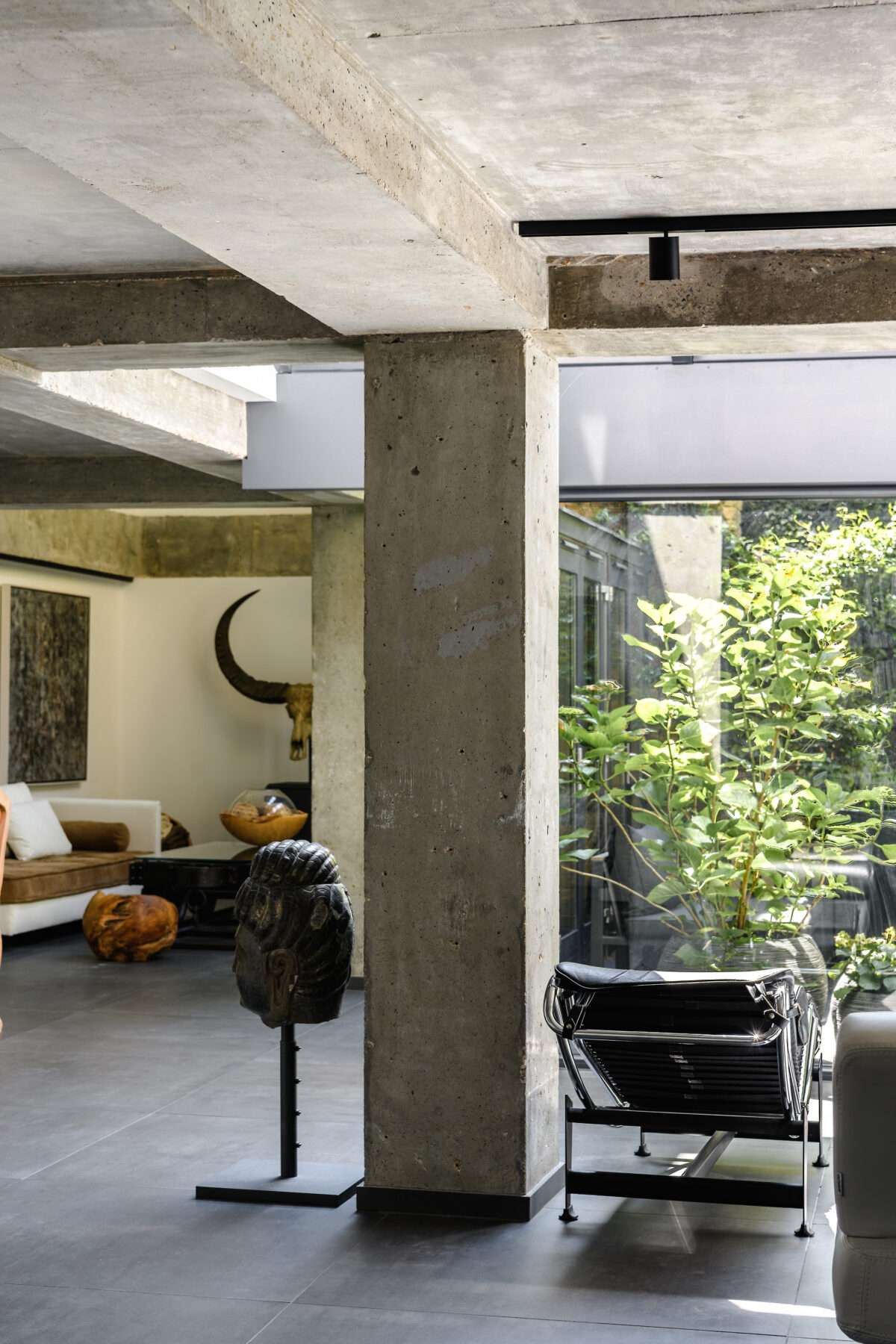
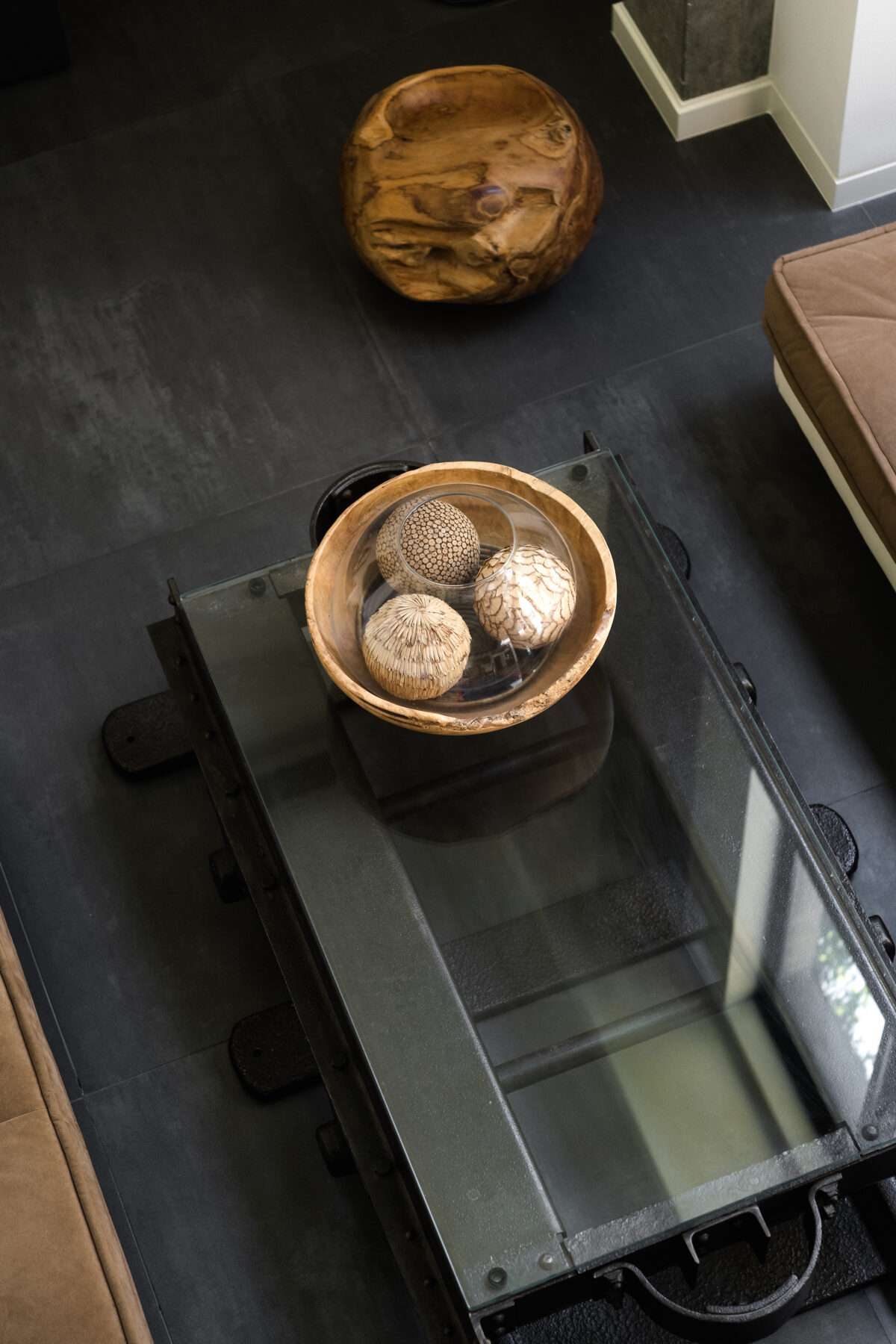
“The structure is quite unique. Unlike most traditional apartments in London, which always look out onto the streets, ours faces inwards, towards the garden. It’s a cocoon of a place where your only view is of the heart of the house – the external patio. I saw the potential of the garden immediately, which, when we first moved in, was not landscaped at all.
“Having an outdoor space in the middle of London is an incredible luxury – it’s like having an oasis. I believe in biophilia, which is when greenery has a calming effect and can make you a happier person, so we added lots of plants and mature vines. It is absolutely essential that it looks lush, green and interesting. My pride and joy is the jasmine wall. The smell is amazing and right now, it’s in its prime.
“The space I use most is at the head of the dining table, where I can see the garden and I have my water buffalo staring at me. If I’m doing any work on the computer, this is where I sit, and it just makes me really happy.
“I’ve always worked from home. I often go and visit other artists’ studios, and I do sometimes envy the amazing, big spaces that they have, but there is something that I appreciate about the proximity of my work and life. The fact that you can work at any time of day or night – you don’t have to take the time to travel.
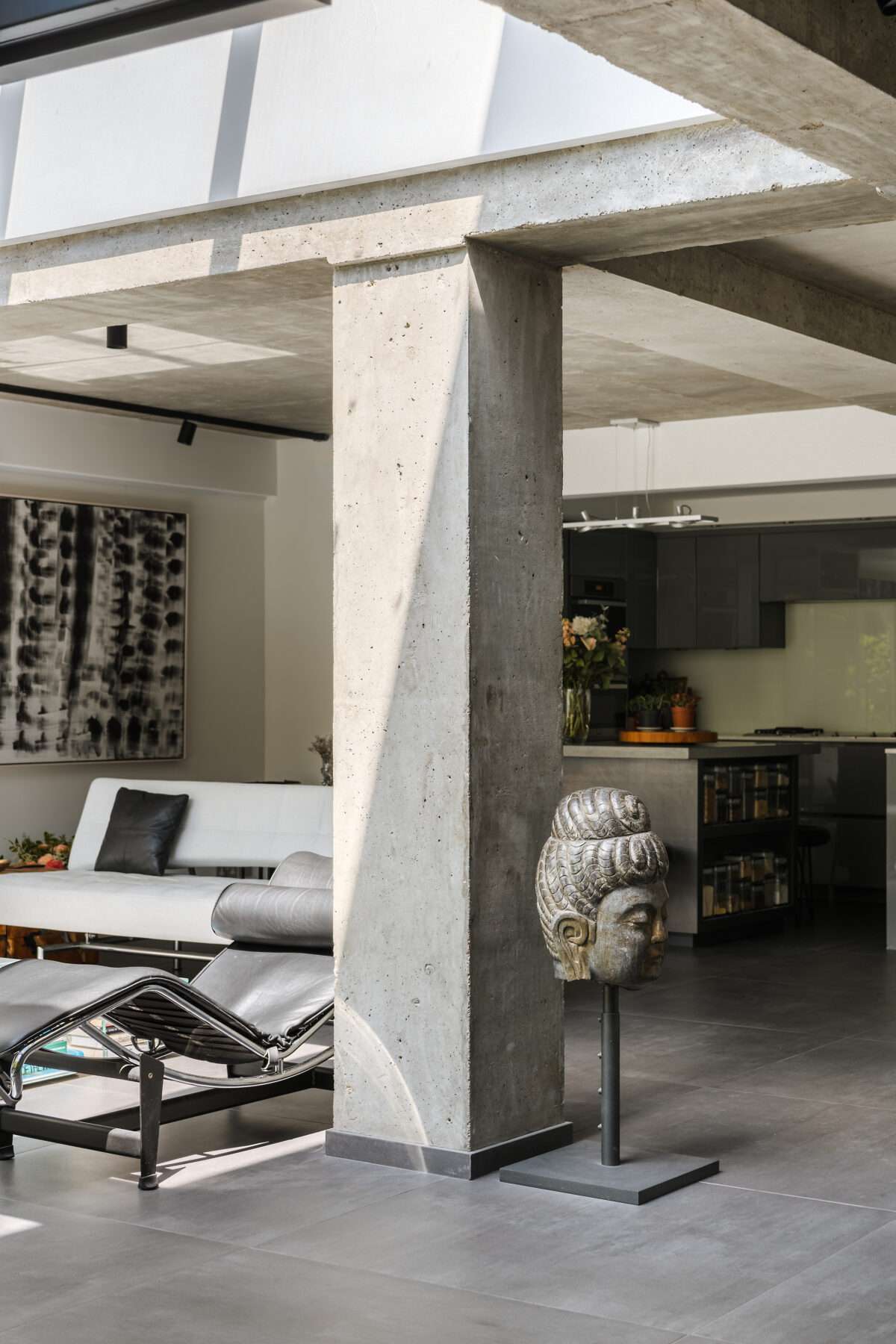
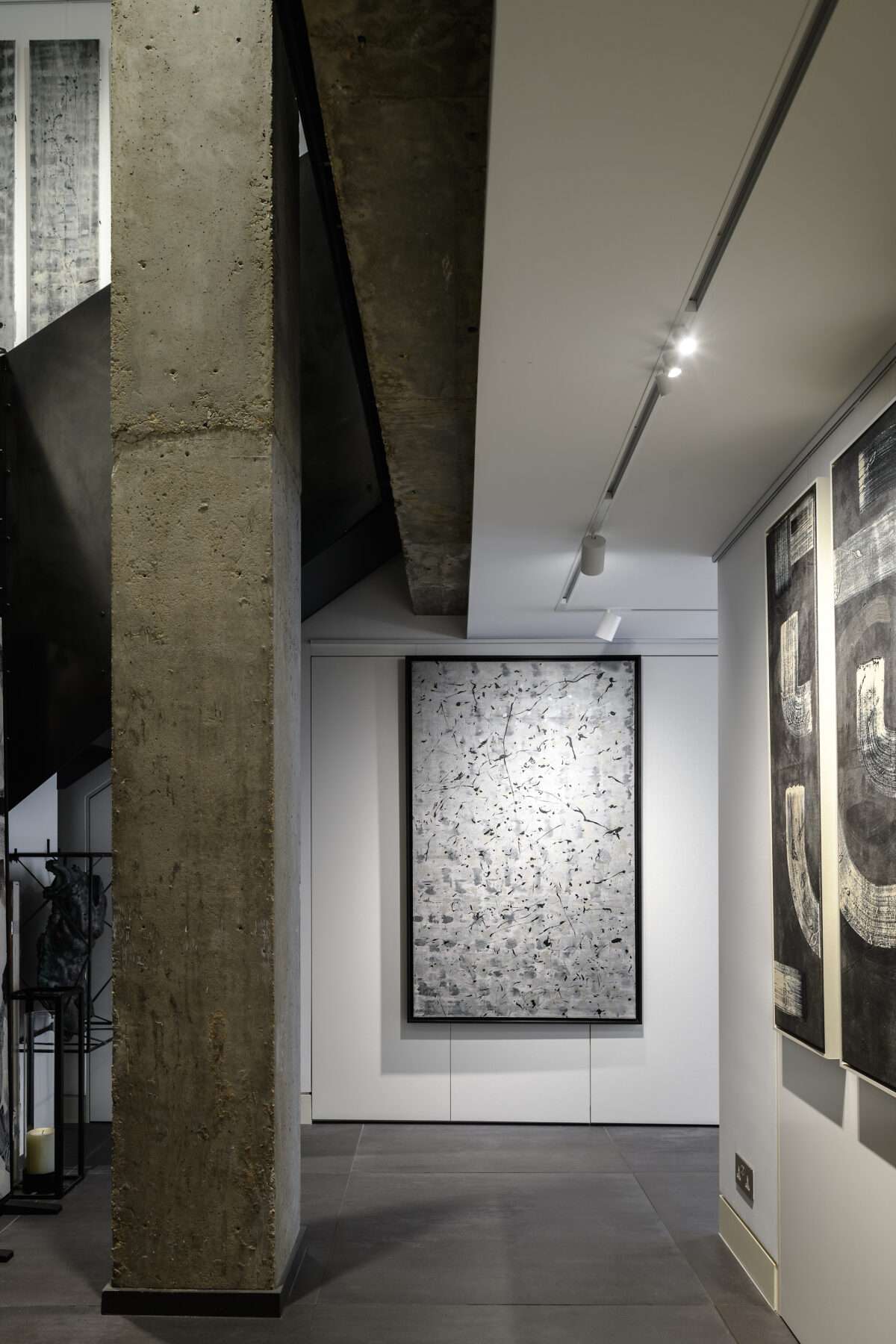
“I love the area, Clerkenwell. I’m an artist, so for me, the soul of a place is very important. Clerkenwell is known for craft, for people who work with their hands. There are printmakers, architecture and goldsmiths who have been here for a hundred years.
“Clerkenwell has more architectural firms and design showrooms per square meter than any other spot in the world. From Zaha Hadid to you name it, they’re all within a few blocks. When we renovated the space, the trend was to do everything locally, and in a way, everything in this apartment is local. Even though much of it comes from Holland, for example, it still came from a showroom that’s two blocks away. So, it’s all here – the soul of Clerkenwell. It’s real and honest.”
Azadeh, how do you define modern living?
“Modern to me means fluid and open – and I don’t just mean open-plan, I mean open to new ideas, open to creativity. It’s a mix of old and new – contemporary furniture with aged pieces of stone and wood. It’s clean lines, open-mindedness and juxtapositions of different times.”
Has there been a home on The Modern House that has caught your eye recently?
“The one I’ve liked for a long time is the Ghost House. There are elements of it that absolutely exist here – the outdoor space, the exposed concrete, the dark steel. And it’s inspired by Tadao Ando, one of my favorite architects.”
